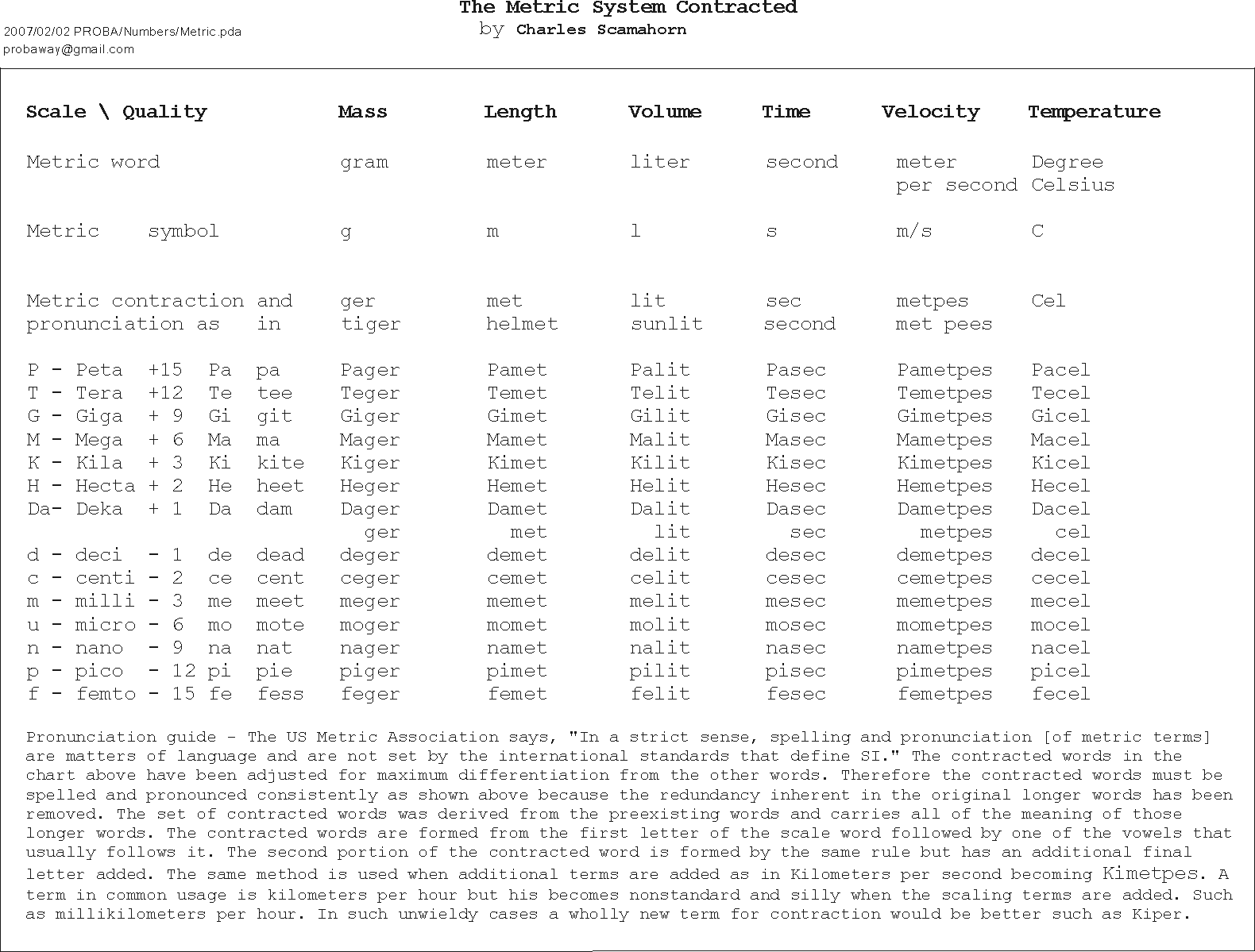One of the most annoying problems encountered by users of the metric system is its use of long words for frequently used terms. In the old system we had inch, foot, mile, pound, ton but now those same general sizes are measured with millimeters, centimeters, kilometers, kilograms, mega grams. The metric terms are useful because they are easily scalable to larger or smaller sizes but in practice they are annoying to use because of their bulkiness to write and speak. Some users of the metric system have tried to shorten the words they use frequently and have come up with such terms as klick and kilo. These are short ways of saying kilometer and kilogram and work well enough when in a confined context but when out of context they quickly lead to confusion and error.
The Metric System Contracted is a consistent and clear set of short words derived from the preexisting terms which will carry all of the meaning of the fully pronounced longer words metric words. When the user knows the metric system and knows that he is using a contraction of a longer metric term there will be little confusion because he can revert and use the longer more verbally redundant term at any time that an additional clarity is needed.
There is the necessity of learning specific words for specific metric units but this shouldn't be too much of a problem because each occupation tends to use a limited number of scales of measure. Since the new words proposed are logical truncations of already existing words they will not be difficult to remember and as they are easier to use they will soon come into common usage within a local field of usage.
The goals for the contracted metric system are:
1. The following quote is from the U.S. Metric Association [USMA] . "In a strict sense, spelling and pronunciation [of metric terms] are matters of language and are not set by the international standards that define SI." Because of this broad definition it becomes legitimate, by their own preexisting rules, to truncate the pronunciation and even the spelling of the SI terms.
2. Each word should be formed of a reasonable contraction of the existing metric word and its paired variable.
3. Each contracted word should be distinct from all others.
4. It should be easy to pronounce and understand in every language.
5. The contracted words nearest the base units should have priority when a conflict arises as to the new contracted word formation.
6. Individuals will use some of the proposed words frequently but most will be used infrequently. Those rarely used words are presented here to clarify the system and to eliminate potential conflicts.
Contracted Metric Chart . . . is for spelling and pronuncing the truncated forms of the SI metric measurement system. Click here for a nice, printable PDF file of the chart below.
For quickly pronounced numbers go to the Contracted Number system.
For quickly written words go to the Proba Script.

Liability disclaimer statement: These Probaways contain new and unique information that has been created, tested and retested by me alone. You must approach these findings and materials very carefully as your results may differ greatly from my experience and I can offer no recompensation of any kind for any injuries.
